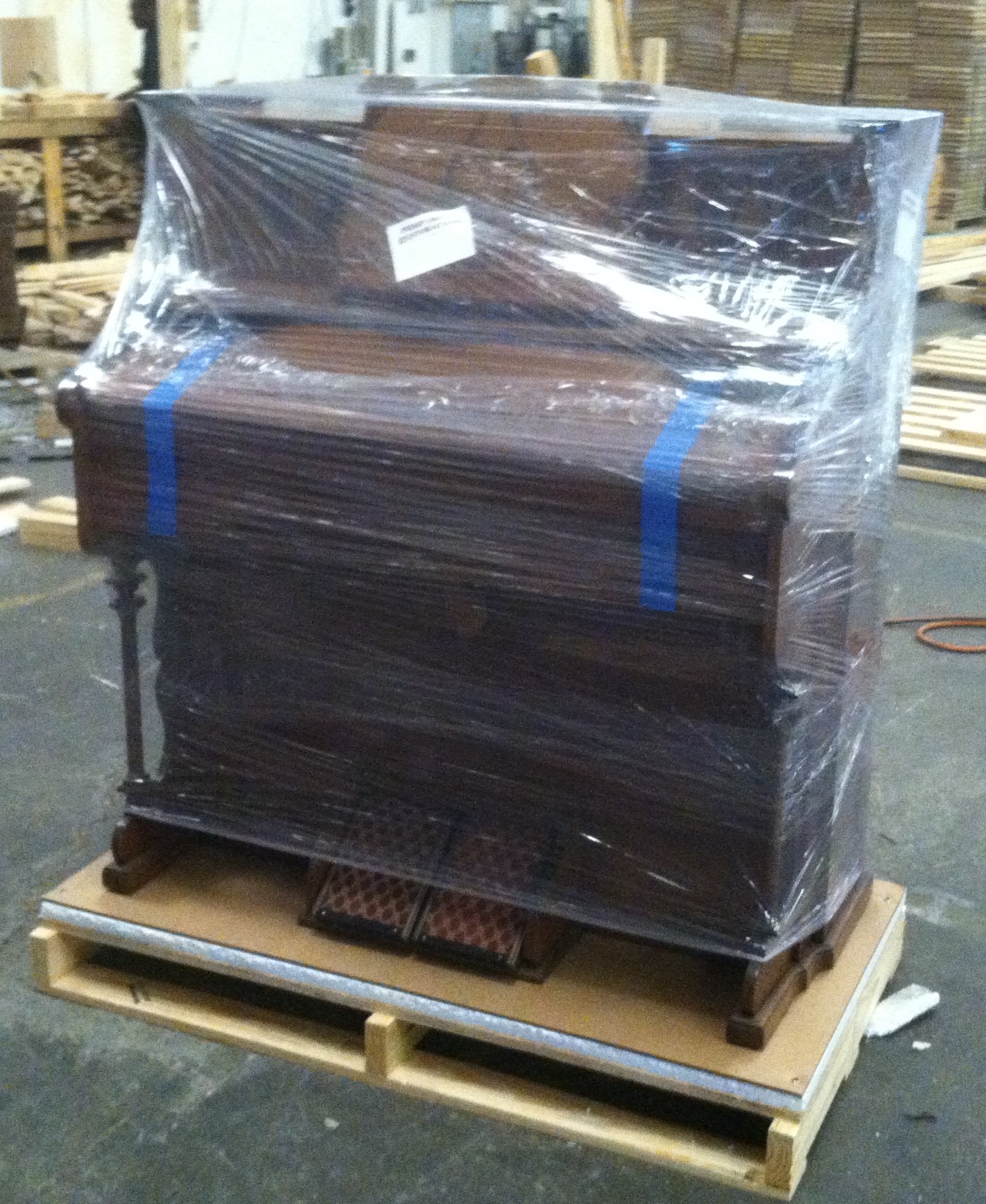|
Antique Organs |
Antique Organs |
Meet the all-important Brass ReedIt is the brass reed that makes the sound we hear when playing a pump organ. Whether your pump organ has 61 reeds or 961, if they're not in good working order you're going to know it very quickly. It's surprising how just a small speck of foreign matter will cause a reed not to function, or not to function correctly.
The only point where a reed tongue makes contact with its brass casing that surrounds the reed tongue is at the back where there are two small brass rivets that hold the tongue in place. When the tongue is suspended on all three sides correctly, the distance between the brass casing and the reed tongue is about the thickness of a human hair. You can now better understand just how important it is that reed tongues be absolutely free of anything. It's during the pump organ’s restoration process that these brass reeds are individually removed, cleaned and checked for any damage to the reed, or the wooden reed cell that it sits in. And if either is damaged, they are replaced or repaired. In today's home environment, pump organs are no longer subject to open windows that allow just about anything blowing in the wind to come in the home. We can only imagine what it must have been like a hundred years ago with all the soot in the air from everyone burning coal and wood for cooking and heating. So we can easily see "clean reeds are good playing reeds." |
Click Here & Email Me Your Questions
Learn more about the Customer's Restoration Photo Album CD!
(click picture to view)
See my crate building process for shipping restored organs

KI4LUK
Pump Organ Restorations
Rod Fudge, Owner and Technician
www.pumporganrestorations.com
All content Copyright © 2009-2023 Pump Organ Restorations · All Rights Reserved · Site Map
Hosted by Bluehost
 Although a reed has two primary brass parts, it is the reed tongue that's the
critical part(as seen in the illustration at right). The reed tongue must be able to vibrate freely in
order to generate the correct sound.
Although a reed has two primary brass parts, it is the reed tongue that's the
critical part(as seen in the illustration at right). The reed tongue must be able to vibrate freely in
order to generate the correct sound.
